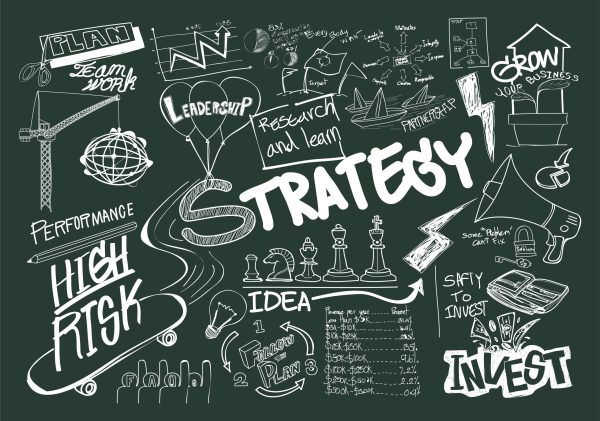
Understanding the Greater Fool Theory: A Deep Dive into Market Irrationality
In the complex world of financial markets, few concepts capture the essence of speculative behaviour as vividly as the greater fool theory. This theory suggests that investors can profit from overvalued assets as long as there’s a “greater fool” willing to pay a higher price. As we explore greater fool theory examples, we’ll uncover how this phenomenon has shaped market dynamics and investor behaviour throughout history.
The Psychology Behind the Greater Fool Theory
At its core, the greater fool theory is deeply rooted in human psychology. It plays on our innate desire for quick gains and our susceptibility to herd mentality. As legendary investor Warren Buffett once quipped, “Be fearful when others are greedy, and greedy when others are fearful.” This wisdom directly challenges the mindset that drives greater fool scenarios.
Charlie Munger, Buffett’s long-time partner, offers a more pointed perspective: “If you’re going to be a great investor, you have to fit the style to who you are. You have to just say, ‘I’m going to do what works for me.'” This advice underscores the importance of resisting the allure of greater fool scenarios and sticking to sound investment principles.
Greater Fool Theory Example: The Dot-Com Bubble
One of the most prominent examples of the greater fool theory in action is the late 1990s and early 2000s dot-com bubble. During this period, investors poured money into internet-based companies, many of which had little to no profit. The belief was that these companies would eventually become profitable, or at the very least, someone else would buy the shares at a higher price.
Peter Lynch, the renowned Fidelity fund manager, warned about such speculative fervour: “Know what you own, and know why you own it.” Many investors during the dot-com era ignored this advice, buying into companies they didn’t understand simply because the prices were rising.
As the bubble reached its peak, even seasoned investors were caught up in the mania. Jim Simons, the quantitative trading pioneer, noted, “The best way to make money is to find a way to be right more often than you’re wrong.” However, during the dot-com bubble, many investors abandoned this principle, relying instead on the greater fool theory to justify their investments.
Technical Analysis and the Greater Fool Theory
While the greater fool theory might seem at odds with technical analysis, there are interesting intersections between the two. Technical analysts often look for patterns that indicate when a market or asset is overbought or oversold. In some cases, these patterns can align with greater fool scenarios.
William O’Neil, founder of Investor’s Business Daily, emphasizes combining technical and fundamental analysis. He states, “What seems too high and risky to the majority generally goes higher and what seems low and cheap generally goes lower.” This perspective acknowledges that market movements can extend beyond rational valuations, a key aspect of greater fool scenarios.
Cognitive Biases Fueling Greater Fool Behavior
Several cognitive biases contribute to the persistence of greater fool scenarios in financial markets. Confirmation bias leads investors to seek out information that supports their existing beliefs about an asset’s value. Overconfidence bias can cause investors to overestimate their ability to time the market and sell before the bubble bursts.
Ray Dalio, founder of Bridgewater Associates, stresses the importance of recognizing and overcoming these biases. He advocates for “radical open-mindedness,” stating, “If you’re not worried, you need to worry. And if you’re worried, you don’t need to worry.” This approach can help investors avoid falling into greater fool thinking.
Greater Fool Theory Example: The Housing Bubble of 2008
Another striking example of the greater fool theory in action was the U.S. housing bubble that led to the 2008 financial crisis. In this case, home buyers, lenders, and investors all participated in a market driven by the belief that housing prices would continue to rise indefinitely.
John Templeton, known for his contrarian investing approach, would likely have viewed this situation with scepticism. He famously said, “The four most dangerous words in investing are: ‘This time it’s different.'” This wisdom applies perfectly to greater fool scenarios, where participants often justify irrational valuations by claiming that traditional metrics no longer apply.
As the housing bubble reached its peak, even sophisticated investors were caught up in the mania. David Tepper, founder of Appaloosa Management, later reflected on the crisis, saying, “The key to making money in stocks is not to get scared out of them.” However, in greater fool scenarios, the challenge is often knowing when to get out before the music stops.
The Role of Mass Psychology in Greater Fool Scenarios
Mass psychology plays a crucial role in perpetuating greater fool scenarios. As more investors buy into an overvalued asset, it creates a self-reinforcing cycle of price increases and FOMO (fear of missing out). This phenomenon aligns with George Soros’s theory of reflexivity, which suggests that market participants’ biased views can influence the very fundamentals they’re attempting to assess.
Soros himself has profited from recognizing and exploiting these market dynamics. He once said, “Markets are constantly in a state of uncertainty and flux, and money is made by discounting the obvious and betting on the unexpected.” This perspective highlights the potential for savvy investors to profit from greater fool scenarios while also underscoring the risks involved.
Greater Fool Theory in Cryptocurrency Markets
In recent years, cryptocurrency markets have provided numerous examples of greater fool theory in action. The rapid price appreciation of Bitcoin and other cryptocurrencies has often been driven by speculation rather than fundamental value.
Carl Icahn, known for his activist investing approach, has been sceptical of cryptocurrencies. He once compared them to the Mississippi land bubble of the 1800s, saying, “I wouldn’t touch that stuff.” This perspective highlights the risks associated with investing in assets that lack intrinsic value and rely on greater fool dynamics for price appreciation.
Protecting Yourself from Greater Fool Scenarios
While greater fool scenarios can create opportunities for short-term profits, they also pose significant risks. Benjamin Graham, the father of value investing, advocated for a margin of safety in all investments. He said, “The intelligent investor is a realist who sells to optimists and buys from pessimists.” This approach can help investors avoid getting caught up in greater fool scenarios.
John Bogle, founder of Vanguard and pioneer of index investing, offered a simpler solution: “Don’t look for the needle in the haystack. Just buy the haystack!” This advice suggests that broad diversification can protect investors from the risks associated with individual asset bubbles driven by greater fool dynamics.
The Greater Fool Theory and Market Cycles
Greater fool scenarios often coincide with the late stages of market cycles. As bull markets mature, investors become increasingly willing to justify higher valuations, setting the stage for greater fool dynamics.
Paul Tudor Jones II, known for predicting the 1987 stock market crash, emphasizes the importance of understanding market cycles. He states, “The secret to being successful from a trading perspective is to have an indefatigable and undying and unquenchable thirst for information and knowledge.” This approach can help investors recognize when markets are entering greater fool territory.
Learning from History: Famous Greater Fool Scenarios
Throughout financial history, there have been numerous examples of greater fool scenarios. The Dutch Tulip Mania of the 1630s, the South Sea Bubble of 1720, and the more recent examples we’ve discussed all demonstrate the persistent nature of this phenomenon.
Jesse Livermore, one of the greatest traders of all time, famously said, “There is nothing new in Wall Street. There can’t be because speculation is as old as the hills. Whatever happens in the stock market today has happened before and will happen again.” This perspective reminds us that while the specific assets may change, the underlying human psychology driving greater fool scenarios remains constant.
The Ethics of Exploiting Greater Fool Scenarios
While some investors may attempt to profit from greater fool scenarios, there are ethical considerations to consider. Warren Buffett’s famous quote comes to mind: “Be fearful when others are greedy, and greedy when others are fearful.” While this advice can be profitable, it also raises questions about the ethics of knowingly participating in and potentially exacerbating market bubbles.
Philip Fisher, known for his growth investing strategy, emphasized the importance of long-term thinking in investing. He said, “The stock market is filled with individuals who know the price of everything but the value of nothing.” This perspective challenges the short-term mindset that often drives greater fool scenarios.
Conclusion: Navigating a Market of Fools
As we’ve explored various greater fool theory examples, it’s clear that this phenomenon is a persistent feature of financial markets. From the dot-com bubble to the housing crisis and beyond, the allure of quick profits has repeatedly led investors to ignore fundamental valuations and bet on the existence of a “greater fool.”
However, as Charlie Munger wisely noted, “It’s not supposed to be easy. Anyone who finds it easy is stupid.” This reminder of the challenges inherent in investing serves as a fitting conclusion to our exploration of the greater fool theory.
By understanding the psychology behind greater fool scenarios, recognizing the signs of market bubbles, and heeding the wisdom of legendary investors, we can strive to make more informed investment decisions. Whether we choose to avoid greater fool scenarios entirely or attempt to navigate them carefully, the key is to remain grounded in sound investment principles and a clear understanding of market dynamics.
As we move forward in an ever-evolving financial landscape, let us remember past lessons and approach the markets with a combination of curiosity, caution, and critical thinking. In doing so, we may hope to avoid becoming the “greater fool” while still capitalizing on the opportunities that markets present.










